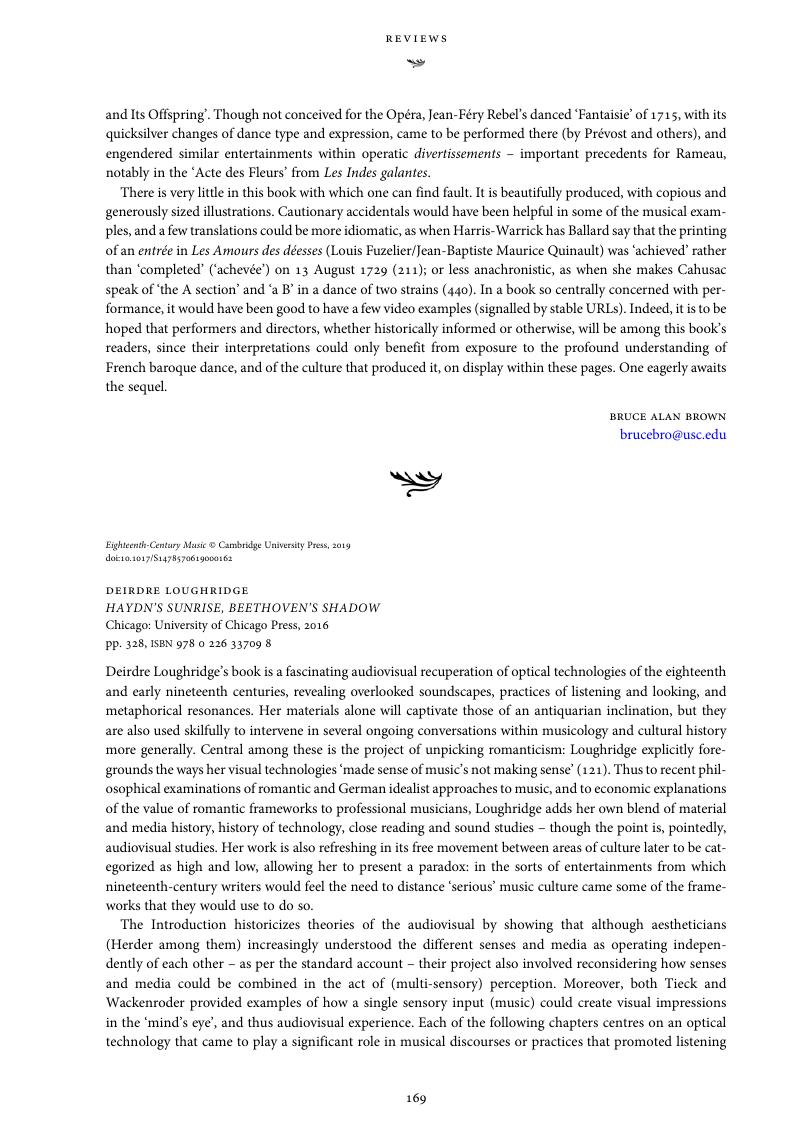No CrossRef data available.
Article contents
DEIRDRE LOUGHRIDGE HAYDN'S SUNRISE, BEETHOVEN'S SHADOW Chicago: University of Chicago Press, 2016 pp. 328, isbn978 0 226 33709 8
Published online by Cambridge University Press: 20 August 2019
Abstract
An abstract is not available for this content so a preview has been provided. Please use the Get access link above for information on how to access this content.

- Type
- Reviews: Books
- Information
- Copyright
- Copyright © Cambridge University Press, 2019




